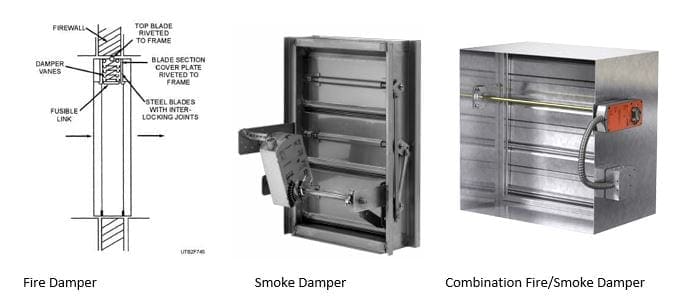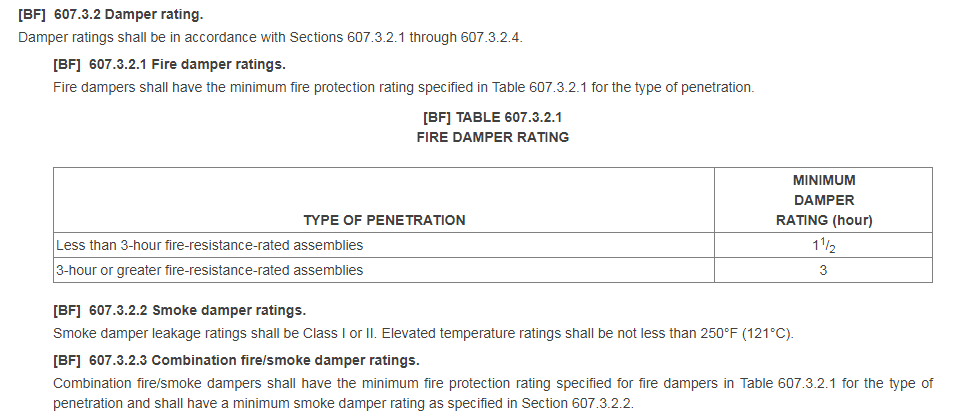
Lighting Color Temperature Strategies for the Home and Office
Here are some strategies to keep in mind when selecting color temperatures for the LED light fixtures in your next project.
Learn from award-winning professionals — explore our whitepapers, blogs, and the latest industry updates.
Join our dynamic organization of engineers, land surveyors, landscape architects, environmental scientists, and architects!
Talk to a market leader today! We’ll answer any questions you have about our professional services.

Fire protection systems can help manage or extinguish fire, aid in occupant evacuation, and help protect property from damage. These systems can be separated into two categories: active fire protection (AFP) and passive fire protection (PFP). AFP systems require a trigger action to function, and include things like fire extinguishers, fire/smoke alarms, and sprinkler systems. PFP systems, on the other hand, include building elements such as fire and smoke rated walls and floors that are used to separate parts of the building.
As part of the passive fire protection system, fire/smoke rated partitions and barriers compartmentalize the building and prevent the spread of fire and smoke to the entire building. While penetrating these barriers with ductwork should be avoided if possible, sometimes it is necessary. In these penetrations, fire and/or smoke dampers can be utilized to maintain the fire resistance rating. There are three types of these dampers: fire dampers, smoke dampers, and combination fire/smoke dampers (FSDs).
Fire dampers are designed for the purpose of preventing the spread of flames across a rated barrier. A fire damper is installed within the duct where the duct intersects the barrier. They operate using a heat sensitive device that, when activated, melts and causes the damper components to close. A smoke damper can also be installed within the duct, and is activated by a signal from a smoke detector within the damper. Upon detection of smoke, the actuator will automatically close the damper components. A combination fire/smoke damper will close upon detection of EITHER fire or smoke. An FSD can also contain an electric heat release device, which can be reset, and allows the damper to close in a more controlled way, rather than slamming shut when the heat sensitive device melts. FSDs will also close upon electrical power failure, as they are held open by a powered actuator. This means that they can be interlocked with the building fire alarm system such that they close after receiving a signal from the fire alarm system.
So, we know the difference. But how do we know which one to use? The simple answer is that the rating of the damper should match the rating of the barrier that it is protecting. For example, if the barrier is only rated to prevent the spread of fire, only a fire damper is required. If the barrier is rated to prevent the spread of smoke and fire, an FSD is required. FSDs are larger and more expensive than fire dampers, so they are generally only used in barriers that are fire and smoke rated.
FSDs are listed with both a fire rating and a leakage class. The mechanical code governing the area in which your building is located will determine how the FSD is selected. Below is a reference from the 2015 International Mechanical Code showing the requirements for fire and smoke dampers. Combination fire/smoke dampers must meet the requirements for both fire dampers and smoke dampers. Also shown below is an example of an FSD that would meet these requirements when installed in an assembly with less than a 3-hour fire resistance rating.


In order to properly protect a building and its occupants, the active and passive fire protection systems must work together effectively. Fire dampers, smoke dampers, and combination fire/smoke dampers are critical parts of passive fire protection systems. These elements protect buildings from property damage, and allow for proper occupant evacuation in the event of a fire emergency.
Sources:

WGI is a national design and professional services firm leading in technology-based solutions for the construction of public infrastructure and real estate development. At WGI, we’re providing Tomorrow’s Infrastructure Solutions Today.

Here are some strategies to keep in mind when selecting color temperatures for the LED light fixtures in your next project.

WGI makes a very significant 41-spot jump from last year’s Hot Firm ranking of #76.

As energy costs continue to rise, and as energy performance continues to be a priority for both owners and tenants, efficiency is a competitive advantage.

On this episode of WGI Unleashed, we get to know Joelle McCormack, MEP Team Leader located in our Austin, Texas office.

In this first episode of a four-part series, we discuss how key changes in lighting design and controls will affect building designers and developers in Austin, TX.

WGI was ranked in the top 200 for the tenth consecutive year by Engineering News-Record (ENR) on their Top 500 Design Firms List for 2024.
You’ve been searching for a place like WGI. We look forward to meeting you soon.
Sign up to receive emails to hear our latest news and achievements in our monthly newsletter.
Enter your zip code, and we’ll personalize your experience with local projects, office locations, team members, and more.
WGI supports its associates with meaningful opportunities for growth, strong benefits and perks, while we work collaboratively with clients and co-consultants to shape and improve communities.






WGI is a dynamic organization with opportunities nationwide for engineers, land surveyors, landscape architects, environmental scientists, and architects.